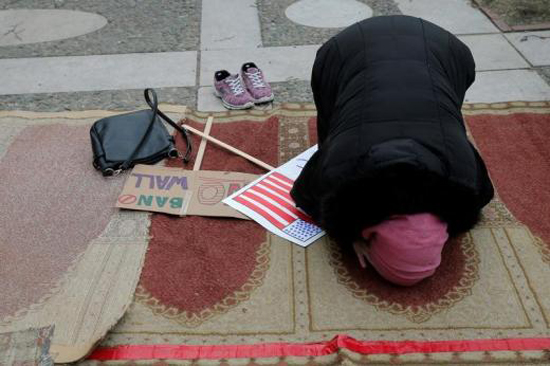Immigrant Muslims and those born in U.S. see life differently in many ways: Pew

Most U.S. Muslim adults hail from other parts of the world as they account for 58 percent of the followers of Islam, but they tend to see life very differently in many ways to those born in United States, a Pew Research Center analysis finds.
The Muslim immigrants owe their presence in America largely to the 1965 Immigration and Nationality Act that lowered barriers to immigration from Asia, Africa and other regions outside Europe.
But those Muslims born in the U.S. are a considerable chunk at 42 percent.
They consist of descendants of Muslim immigrants, converts to Islam, many of them black, and descendants of converts says the latest Pew analysis published on April 17.
A Pew Research Center survey of American Muslim adults in 2017, revealed important similarities between foreign-born and U.S.-born Muslims.
For example, immigrants and U.S.-born Muslims engage in religious practices at about the same levels.
It also found there are also important differences. Immigrants tend to have secured a stronger socioeconomic foothold than U.S.-born Muslims, and they generally express more positive opinions about their place in America.
Immigrants tend to have secured a stronger socioeconomic foothold than U.S.-born Muslims, and they generally express more positive opinions about their place in America.
Both the immigrant and U.S.-born Muslim populations are racially and ethnically diverse, though in different ways.
A large share of foreign-born Muslims are Asian, while many U.S.-born Muslims are black or Hispanic.
And substantial shares of both foreign-born and U.S.-born Muslims identify as white, a category that also includes people who identify racially as Arab, Middle Eastern or Persian.
"There's no single racial or ethnic majority within the Muslim community," Pew finds.
Just over half of Muslim immigrants in the United States, 56 percent have arrived since 2000, and they come from a wide array of countries, with no single region or country of origin accounts for a majority of them.
In total, immigrant respondents in Pew Research Center's 2017 survey of U.S. Muslims named 75 different countries of origin.
And this is reflected in their racial and ethnic diversity: No single racial or ethnic group accounts for a majority among Muslim immigrants, with 45 percent identifying as white and a similar share (41 percent) identifying as Asian.
Both immigrant and U.S.-born Muslims are about as likely as the general U.S. population to say they are proud to be American. And they express pride in their religious identity at about the same rate as U.S. Christians.